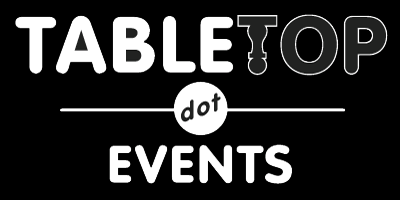THE X-CARD
An X-card is a tool for everyone's protection and comfort.
It helps maintain a safe environment at the gaming table. Roleplaying games can be very improvisational and adventures can vary widely in content. It can be impossible to predict when uncomfortable content might come up.
An X-card is a tool to keep the content at the table safe for everyone. It is a card in the middle of the table with an X on it. Should someone feel uncomfortable at anytime, they can tap the X-card. The event host and other players will change the content, dial it back, or skip the scene.
This convention endorses and uses the X-Card as part of our plan to create a safe and inclusive environment for gamers. X-Cards will be provided at the In-Person Day for all participants.
The X-Card was designed by John Stavropoulos and more information about it can be found his website here.
For more safety tool choices play check out Monte Cook's Consent in Gaming free booklet, it is AMAZING!

To use, at the start of your game, simply say:
“I’d like your help. Your help to make this game fun for everyone. If anything makes anyone uncomfortable in any way… [ draw X on an index card ] …just lift this card up, or simply tap it [ place card at the center of the table ]. You don’t have to explain why. It doesn't matter why. When we lift or tap this card, we simply edit out anything X-Carded. And if there is ever an issue, anyone can call for a break and we can talk privately. I know it sounds funny but it will help us play amazing games together and usually I’m the one who uses the X card to protect myself from all of you! Please help make this game fun for everyone. Thank you!"
The X-Card speech above can be more useful that the X-Card itself. It makes it clear that we are all in this together, will help each other, and that the group of people playing are more important than the game.
Use the X-Card early, even on yourself, to lead by example, and model the behavior.
The X-Card does not have to be a tool of last resort. The less special it feels, the more you use it, the more likely someone will use it when it really is badly needed.
The X-Card is not a replacement for conversation. If you prefer to talk about an issue that comes up instead of using the X-Card, please do. Just because the X-Card is available does not mean it has to be used. But when it is used, respect the person who uses it and don't ask why or start a conversation about the issue. The X-Card is optional.
The X-Card is a safety net, but not everyone will feel comfortable using it in all situations. If a player had a problem with the game and wants to talk to you about it afterward… please listen. It it not okay to say "but you didn't use the X-Card" as a defense. Don't use the X-Card offensively. Listen and talk it out.
If you aren't sure what was X-Carded, call for a break and talk with the person in private.
Don't use the X-Card as an excuse to push boundaries. It's not a Safe Word.
Some Game Runners (usually those who haven't used the X-Card) fear that the X-Card will limit their creativity. Many GMs who use the X-Card find the opposite is true. Since the GM doesn't have to be a magical mind reader, it frees up their energy to focus on other elements of Game Running.
The X-Card is not an excuse to try to get back to the game as soon as possible. People matter more than the game. If you need to take a break, take a break.
While we have referenced triggers in the past (and reference triggers in the rest of this document), we have moved away from using the term. There is a lot of misunderstanding over what a trigger is or isn't. Additionally X-Cards can be useful even in situations unrelated to triggers and PTSD.
